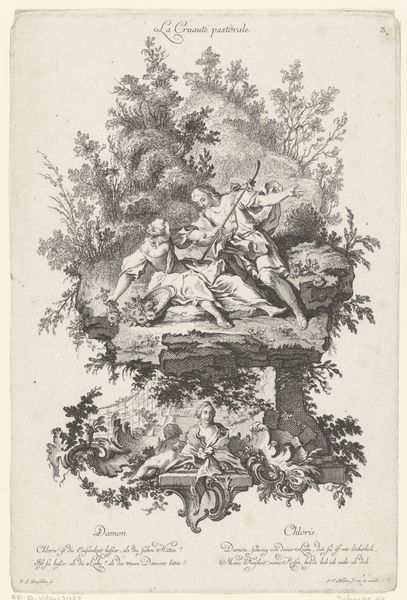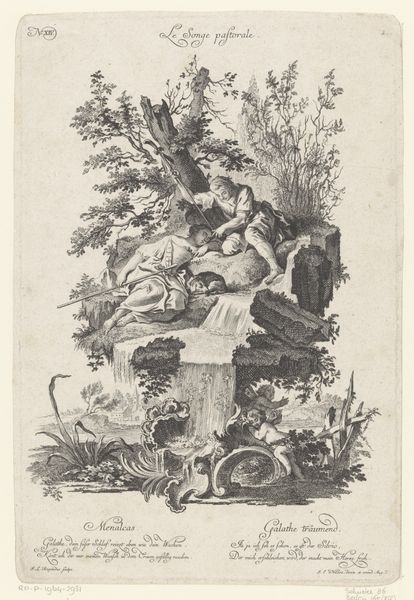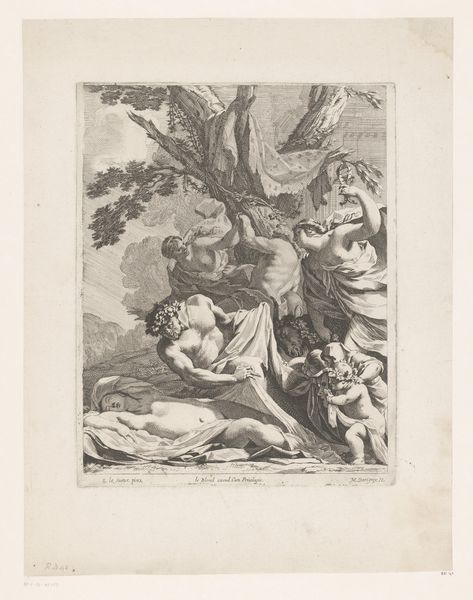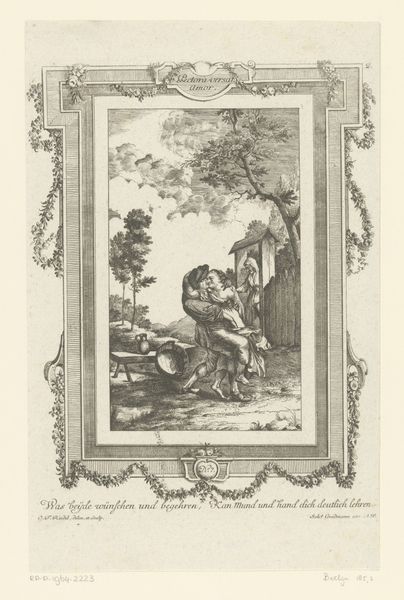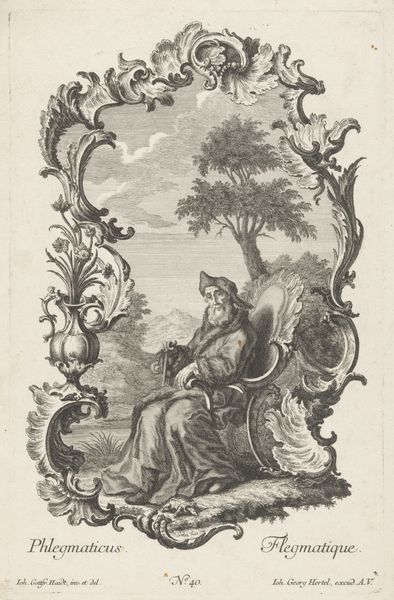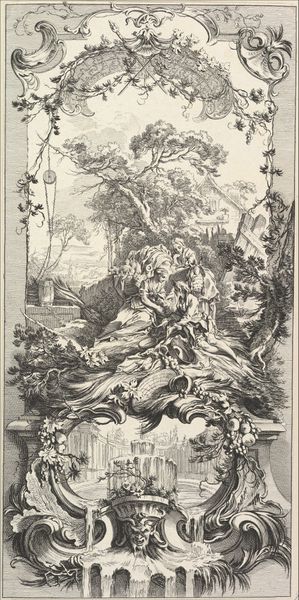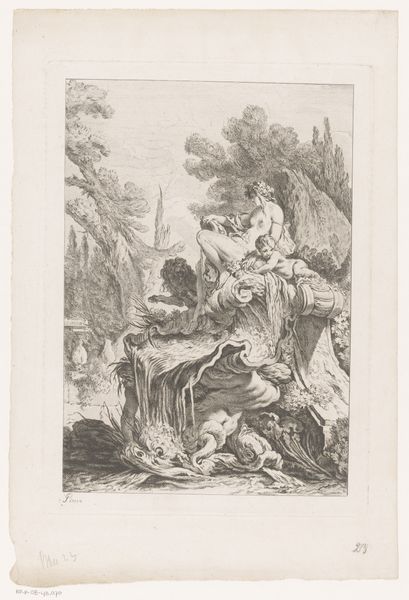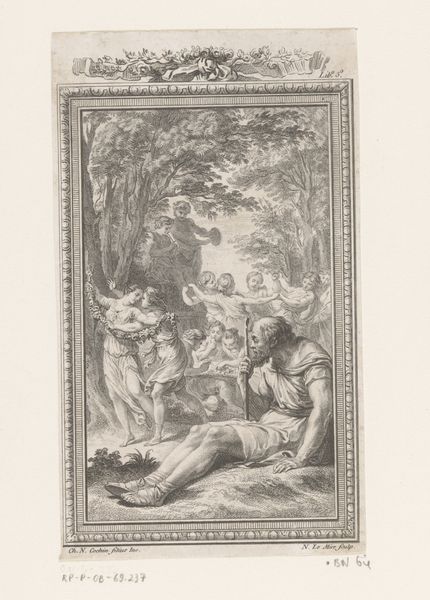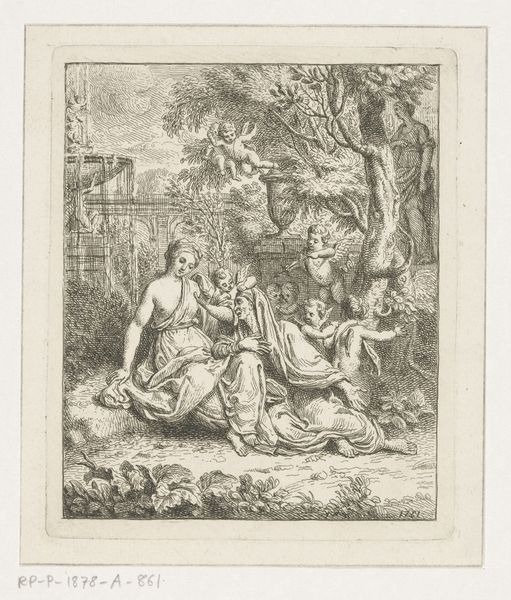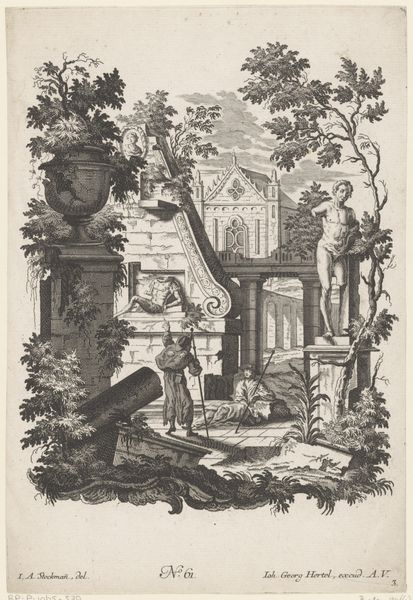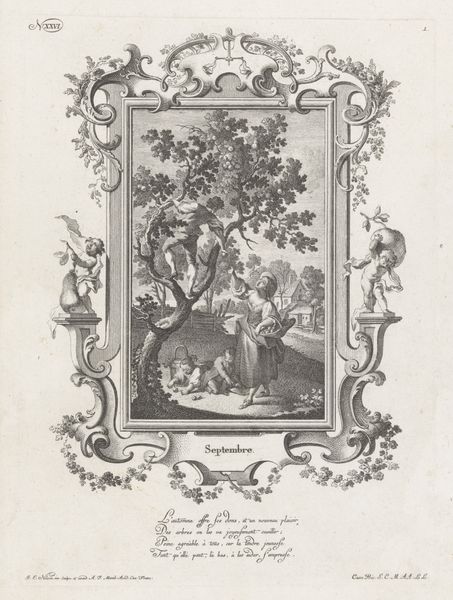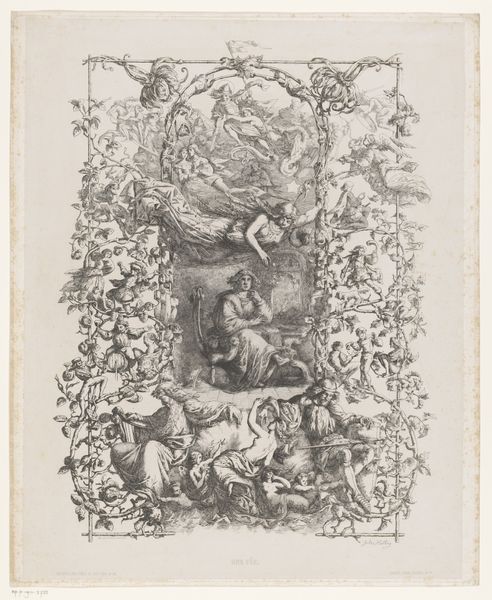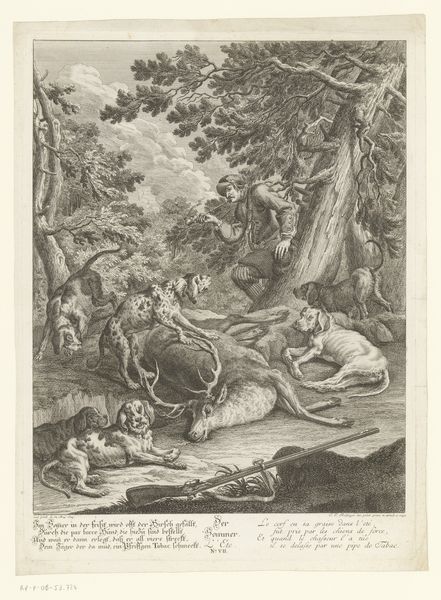
engraving
#
baroque
#
old engraving style
#
landscape
#
genre-painting
#
engraving
Dimensions: height 290 mm, width 193 mm
Copyright: Rijks Museum: Open Domain
Johann Georg Lorenz Rugendas created this print, Coridon en Amaryllis, using etching, a printmaking technique that relies on acid to bite into a metal plate. The image is rendered with an extraordinary fineness of line, creating an intricate scene that would have taken great skill and patience to execute. The process begins by coating a metal plate with a waxy, acid-resistant substance. The artist then draws through this coating, exposing the metal. When the plate is immersed in acid, the exposed lines are eaten away, creating grooves. The depth of these grooves determines the darkness of the lines in the final print. This plate could then be inked and printed multiple times. The resulting tonal range gives the print a delicate, almost ethereal quality. Rugendas masterfully uses this technique to depict the pastoral scene, emphasizing the contrast between light and shadow. We see a fabricated, romanticized view of nature, a world created for leisurely consumption. The material and process thus combine to create an artwork that is both technically impressive and socially revealing.
Comments
No comments
Be the first to comment and join the conversation on the ultimate creative platform.
